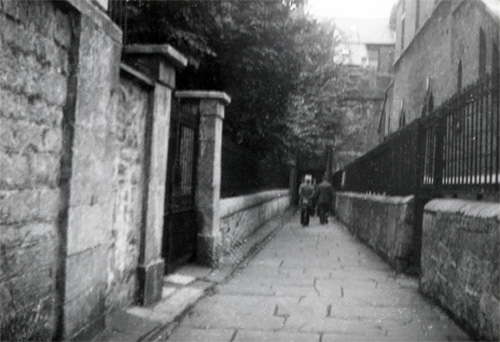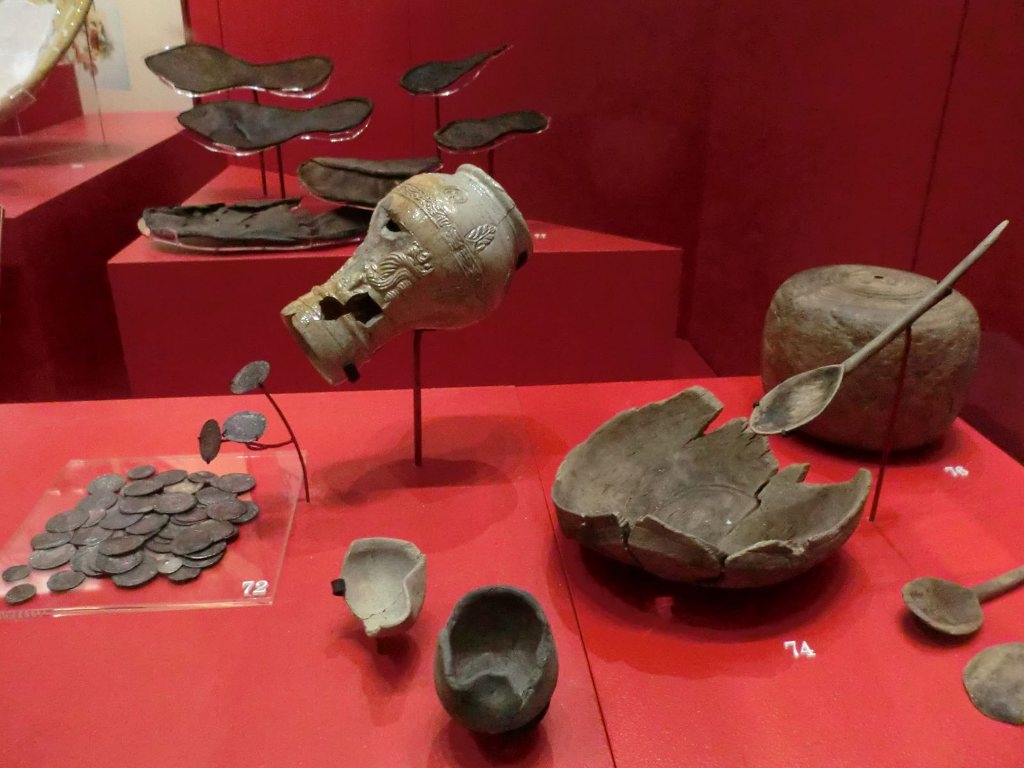Christchurch Lane was one of the oldest surviving lanes in Cork and is clearly visible on the oldest-known map of Cork, ‘The Tower of London Map,’ dating from 1545. It is also one of the few lanes to retain its name throughout all the records. The survival of the lane is not surprising as it ran parallel to the graveyard at the rear of Christchurch which required access.
Early Cork maps show a herringbone pattern of a spinal main street with numerous laneways running at right angles. The street pattern of medieval Cork was essentially linear based on the north-south axis of Main Street, and having lanes running at right angles giving access to individual properties and to the town wall. It was in this context that Christchurch Lane existed.

Sketch of Christchurch Lane by local historian Michael O’Leary. Lyons and Co factory can be seen on the left, opposite Christchurch
In 2011 Christchurch Lane was fully integrated into Bishop Lucey Park
Christchurch Excavations 1974-1977
Excavations near Christchurch discovered property units that were long narrow strips of ground about 20-25ft in width extending from the Main Street to the town wall. These plots were delimited by post and wattle fences which were later replaced by stone walls.
They also uncovered the remains of timber-framed and post-and-wattle houses on the street frontage. These had floors consisting of brushwood, wickerwork matting, or spreads of gravel and were dated to the late 1100s and early 1200s. To the rear was an open area which may have been partially cultivated, although excavation results suggested that it was used primarily as a rubbish dump. From the early 1300s the timber houses were gradually replaced by stone-built houses with slate or stone tiled roofs and stone flags, cobbles or timber flooring.
The excavations also found over 50 large sackfuls of animal bones dating from the medieval period to the 18th century including the bones of fish, cattle, pigs, sheep and goats, and small quantity of deer, rabbit, hare and cat bones (kept as pets), and the bone of a small whale.
Cork City Public Museum exhibits from Christchurch archaeological dig
The public museum in Fitzgerald’s Park exhibits a diverse array of artifacts from the Christchurch dig including wood fragments of a fence dating from 1140, Viking type gaming pieces made from ivory or walrus dating from the 12th century and jugs from Saintoge, South-West France, from the wine trade dating from the mid-13th to late 14th century.


